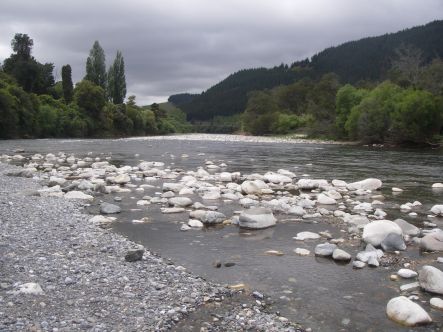
'From the ridgetops to the sea' was an innovative and collaborative 10-year research programme on the Motueka River and Tasman Bay, with the aim of understanding how a river catchment works both physically and socially. The Motueka River, near Nelson, was chosen as it is in a relatively good state, yet faces many of the same problems facing other New Zealand rivers.
The programme brought together scientists from many different disciplines and various institutions, working alongside the Tasman District Council, iwi, local landholders including foresters and farmers, as well as fishers and other interest groups. Another programme innovation was to extend the definition of catchment to include the nearby coastal area, which is strongly influenced by the freshwater and sediment from the Motueka River. The decline of the scallop fishery in Tasman Bay, and in the world-famous trout fishery in the Motueka River were two areas of special interest, while faecal contamination from dairy farms high in the catchment area was traced to mussel farms located 7 kilometres offshore.
Alison Ballance joins Les Basher from Landcare Research(below, centre), and Roger Young (left) and Paul Gillespie (right) from the Cawthron Institute on the shores of Tasman Bay (left), and on the Motueka River (right) to discuss some of the findings from the programme. (images: A. Ballance)



